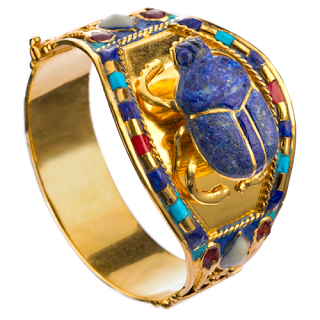Art on the symbol of the goose
In ancient times valuables such as Tutankhamun treasure were symbolic of the gods as found by archaeologist Howard Carter in 1922 Howard's burial site although not many is collected in the Valley of the Kings Amulets amulets gold and gems The golden sarcophagus of Pharaoh Tutankhamun made of precious materials The symbols behind the treasure The goose symbol found in ancient Egypt of Pharaoh Tutankhamun Earrings with the symbol of a pair of geese or ducks were important in ancient Egyptian culture with the idea of fertility protection from danger and the resurrection of the afterlife The concept of the goose even of Pharaoh Ramses II was related to the Egyptian god Amun These symbols that Howard Carter found in the Valley of the Kings are likely linked to resurrection and were worshipped by the god Amun to symbolize the fertility of being an Egyptian pharaoh
The search for the world's greatest treasures of King Tutankhaman including one important thing a clay tray in the sarcophagus of Tutankhaman used to hold sacred water from the Nile River which was believed in ancient Egypt to connect with the afterlife allowing the soul to be resurrected again and the colorful murals that tell of the worship of the god of the dead or the god of the underworld of Osiris which Pharaoh Tutankhaman embraced are clearly connected to the sarcophagus used to mummy Tutankhaman One such item is the sacred staff which was popular in ancient Egypt and the earrings used to decorate it which are the shape of a goose with wings spread out in a circle made of Cloisonné material with 5 pet cobras and under the duck hanging blue glass beads gold and Shen symbols the head is made of translucent blue glass which is used to symbolize peace and abundance in the valuable treasures of Pharaoh Tutankhaman created with the excellent craftsmanship of the ancient Egyptians and Nubians which is an important symbolic detail of Egyptian pharaonic jewelry in ancient Egyptian culture
The goose Bracelet of Ramesses II
Scarab Bracelet of Tutankamun
Geese were common animals in ancient Egypt They were used as offerings to gods and the dead They were a popular decoration for tombs and temples. Around the 1st-3rd century until the modern era during the Ptolemaic and Greek-Roman periods Geese as food abundance in Egypt Geese were very popular in ancient Egypt Raising geese in ancient Egypt was popular as both a sacred symbol and food in that era. As well as geese or ducks and the soft feathers of geese were used to decorate clothing to make it beautiful and natural in ancient Egypt
Hunters,lions,geese,wild boars andcattle
The time when the symbol of the winged animal goose became more important in worship and the preservation of the environment during the dry period of Egypt the early Middle Ages about 4,200 years ago called the period of natural disasters both geese and food and plant production decreased. There were natural floods The time when the antelopes and African wild dogs disappeared from ancient Egypt And the third drought occurred about 3,000 years ago and the New Kingdom ended. Mummification of animals began to disappear during this time The raising of animals that the Egyptians liked began to change and decrease. From hunting to cooking instead It can be seen on the sculptures in Egyptian temples of cooking stories The pottery of the past is excellent because there are many animals that appear in Egyptian art









